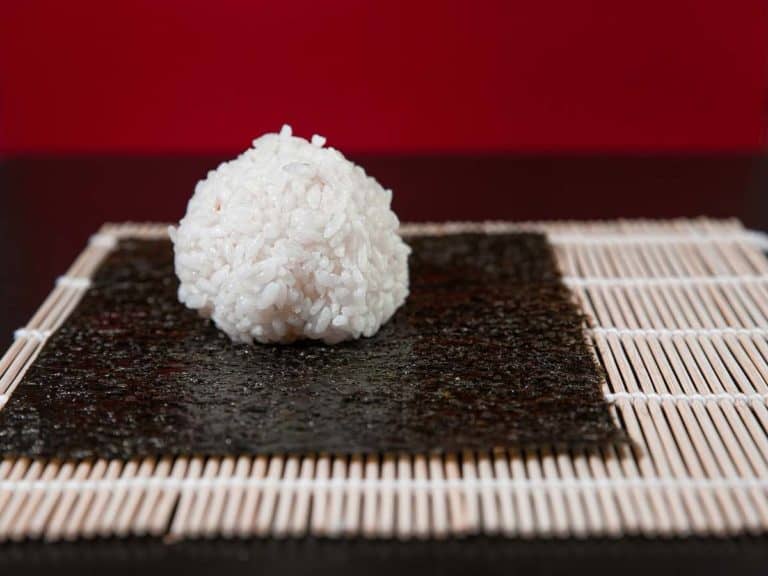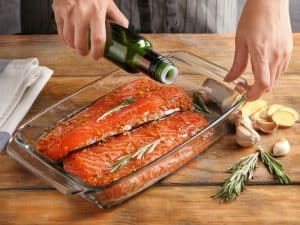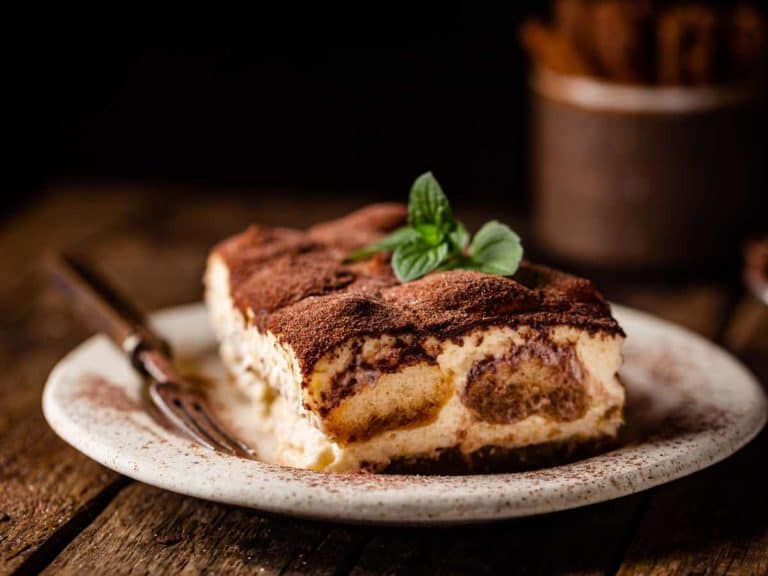How To Store Prunes: Shelf Life, Temperature, etc.
Prunes are usually available in a dried form, and most of them did not undergo the drying process and have added preservatives; that’s why they have a good shelf life. Prunes can be used for about 6 to 12 months. If these are stored properly, then they may keep fresh in taste for a long time, as well. To check if they are still fresh, you can check the aroma of prunes before picking them up from the shelf, as it will give you an idea about the quality of the product.
Generally, prunes last 5 – 7 days if kept in the refrigerator. If storing in a fridge, sort out the fruits, throw out all spoiled, then place them in plastic containers or jars. When stored in a freezer, prunes can last from 12 to 18 months. However, prunes may remain safe beyond that time.
Best Temperature Store Prunes
Prunes Shelf Life
| Prunes | Condition | Shelf Life |
|---|---|---|
| Dried Prunes (opened/unopened) | Home Temperature | 6 to 12 months |
| Dried Prunes (opened/unopened) | Refrigerator | 6 to 12 months |
| Dried Prunes (opened/unopened) | Freezer | 12 to 18 months |
| Dried Prunes (commercially canned or bottled) – opened | Refrigerator | 5 to 7 days |
| Dried Prunes (commercially canned or bottled) – opened | Freezer | 1 to 2 months |
How to Know if Prunes Gone Bad
Practicing proper hygiene and food safety techniques can prevent the occurrence of foodborne illnesses. You can use your senses to tell if your dried prunes have gone bad.
Some common traits of dried prunes going bad are discoloration (usually to a darker tone), hardness, which can become extremely chewy as they age; however, some people prefer them this way, and the loss of flavor that is characterized by a stale or flavorless taste.
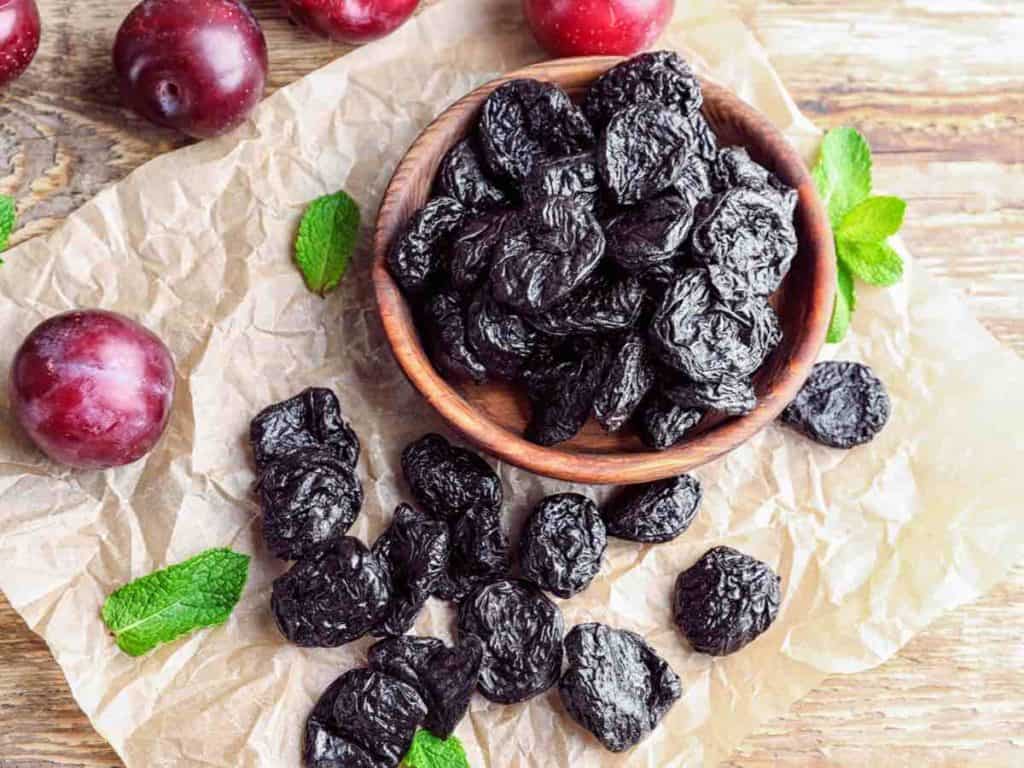
So, if there’s a rotten smell in the prunes, then your dried fruit has gone bad for sure. Good thing, there’s a lower chance of mold formation with dried fruit than fresh fruit because the moisture has been removed. However, be still aware of mold and toss your dried fruit, even the slightest mold is visible.
Of course, there are certain health risks associated with spoiled foods so keep practicing food safety and enjoy the foods before their shelf life has expired!
When checking prunes for spoilage, make sure you:
- Look for any visual signs of deterioration. These include mold, especially near the stem and if the skin is shriveled. The latter doesn’t mean the fruit is spoiled completely, but, you can say the prune is old.
- Check the firmness of the fruit. If the prunes are super soft and filled with oozing juice, it’s time for them to discard.
- Check for worms or larvae inside. Make sure to always cut the prunes and remove the pit before eating. This is to ensure that the insides are free of any insects. Eating the whole thing, then spitting out the pit is not a good idea when it comes to prunes.
How To Dry And Store Dried Prunes
If you have an abundance of prunes, it’s a good idea to dry them. Dried prunes are more flavorful to a wide range of dishes. They are also great tasty and healthy snacks. When stored properly, dried prunes can be kept for a long time. Hence, here are some helpful techniques for drying prunes at home.
Drying Prunes In The Oven
Using the oven is a popular, practical, and easy way of drying prunes.
Follow these steps when drying prunes in the oven:
- Using a small, easy-to-handle, sharp knife, cut the prunes in half. Workaround the pit. Separate them in halves from each other. Take out and discard the pit. You can cut the prunes into smaller pieces to hasten the drying process.
- Arrange the prunes on the oven rack. Allow some space in between each fruit. If the prunes stand too close to each other, it can delay the dehydration process.
- Put a piece of foil or a foil-lined baking tray underneath the rack. It is because the prunes release lots of juice as they go through the drying process. If you put the prunes on a baking pan, the juice will stick to the pan, which can affect the drying process. It is wiser to put the prunes directly on the rack.
- To avoid such mess, place a single layer of foil on the base of the oven, which serves as a catch basin. Use the baking tray lined with foil and put it underneath the rack.
- Set the oven at 175° – 200° Fahrenheit or lower. When drying prunes, it is best when the oven is set at the lowest temperature possible.
- If you want the prunes to dry out in an even manner, check them every couple of hours or so then flip them over now and then. This aims to achieve even drying.
- If you want your prunes to be slightly dryer, keep them in the oven longer.
- Take the prunes out of the oven, once they show the level of dryness that you like.
The drying time will depend on how much juice the prunes have, before putting them in the oven. You must check on them regularly. Typically, drying prunes in the oven may take about eight hours.
Best Oven For Drying Foods

Black + Decker Extra Wide Convection Countertop Toaster Oven
Dimensions: 15 x 22 x 12 inches
This spacious oven can fit almost standard pans with handles; therefore, you can go straight from the oven to the table. Also, the included baking and broiling pan fits perfectly so that you can easily remove and insert the food. This convection oven can also be used to dehydrate food, thanks to the powerful convection fan that circulates the warm air throughout the oven for fast and even baking. Other functions include baking, broiling, toasting, and keeping the food warm.
What I Liked:
- It can fit most oven pans
- Best value for the money
- Comes with an advanced heating element
What I Didn’t Like:
- The knobs are a bit difficult to turn

Oster Toaster Digital Convection Oven
Dimensions: 16 x 20 x 11 inches
This large digital countertop oven can fit up a pan, measuring 2 x 11 x 13 inches. It is equipped with convection technology that has a wide temperature range of 150 to 450 F. It has digital controls that come with 7 cooking settings and an interior light for easy viewing.
Also, it features convection technology that can be used to dehydrate food, allowing even air circulation so that food items will get an evenly distributed heat. On the interior, it features a light wherein you can monitor cooking progress and the 90-minute timer automatically shuts off, so you can cook worry-free.
What I Liked:
- One-touch operation
- It has a large interior capacity
- Includes durable baking pan and removable crumb tray for easy cleanup
What I Didn’t Like:
- Buttons are hard to push and it slides around
Drying Prunes In The Food Dehydrator
You can use a dehydrator to dry prunes.
This machine can reduce the water content of the prunes with the use of heat. Since it efficiently and safely removes moisture, the dehydrator can prevent bacteria from growing, thus helping to preserve your prunes.
Here are the steps on how to do it.
- Choose high-quality fresh prunes. Wash the prunes, then slice them in half. Use a small sharp knife to do this. Remove the stem and the pit.
- Load the prunes on the trays of the dehydrator. If you have a lot of prunes, it’s alright to load them close to each other on the trays. However, make sure they do not overlap as it can affect the air circulation and slows down the drying time.
- After you put the prunes on trays, turn on your dehydrator to begin the drying process. If you have a conventional dehydrator, set the temperature to 115° Fahrenheit.
- Drying time will depend on factors like the amount of water in the prunes, the thickness of the fruit, humidity, temperature, and altitude. On average, prunes dry out within 8 to 14 hours in a dehydrator.
- Check the prunes every so often. Turn the prunes when the upside is dry. If they cling to the tray, it is still moist; leave it for a few hours more before trying to turn them again.
- Take a slice, wait for it to cool, and then check the consistency. If the prune seems dry to your touch, it is done. Keep in mind that they dry at different times, so remove the ones that you think are dry enough for your taste. Check the other sides regularly.
- Cool your dried prunes for 30 to 60 minutes. Make sure that they are cool before you store them.
Best Dehydrator For Drying Foods

National Presto Dehydro Digital Electric Food Dehydrator
Dimensions: 13.5 x 14.25 x 8.5 inches
If you are looking for the best food dehydrator, then this product from Presto is your best option. This dehydrator comes with six transparent drying trays with two fruit roll sheets and two nonstick mesh screens.
It is also equipped with a digital thermostat where you can select the drying temperature settings, ranging from 90 to 165 degrees Fahrenheit. The digital timer sets drying times up to 48 hours and then shuts off automatically.
This food dehydrator is expandable up to 12 trays. It is ideal for dehydrating fresh fruits, vegetables, herbs, spices, and even meat. As you can notice, the body, trays, and cover of this device are clear and see-through, making the drying process easy to monitor.
The flexible, nonstick mesh screens can preserve the food items close to their original size, without turning them smaller when dried. The bottom-mounted fan and heating element offer consistent airflow for optimum drying with no tray rotation needed, preventing the mixing of flavors.
Thankfully, drying trays are fully immersible in water and are dishwasher safe. Cords are stored in the base so that they won’t get wet when you are cleaning the food.
What I Liked:
- Affordable
- Clear and see-through tray and cover for easy monitoring
- Adjustable temperature setting
- Can stack up to 12 trays
- Overall food dehydrator
What I Didn’t Like:
- Accessories are sold separately
- It has a loud fan
NESCO FD-75A, Snackmaster Pro Food Dehydrator

Dimensions: 13.75 x 22.13 x 13.87 inches
The NESCO FD-75 A Snackmaster Pro Food Dehydrator is the best dehydrator for home use. It is the ideal model for average-sized batches of dried foods. It comes with five trays, measuring around 13.5 inches in diameter but can be expandable up to 12 trays if you want to work in larger batches.
The thermostat of this dehydrator is adjustable, allowing you to dry different food items at proper temperatures, ranging from 95 to 160 degrees Fahrenheit. It also has a powerful top-mounted fan that is designed to send the air downward, and then horizontally across the food trays for a more even drying and consistent flow of heat.
This dehydrator features an Opaque Vita-Save exterior that helps block harmful light that can destroy the nutritional content of food that is being dehydrated. It also comes with two solid liner sheets for making fruit roll-ups, drying sauces, and other liquid substances.
The exterior design of the dehydrator is speckled grey. This product is proudly made in the USA, but some parts like the powerhead are imported from China.
What I Liked:
- It can be stored easily in the kitchen cabinet
- It features a Patented Coverga-Flow drying system
- It comes with many accessories
What I Didn’t Like:
- It needs to be manually turned off
Sun-Drying Prunes
Using this technique may take you longer to dry your prunes. However, sun drying prunes are simple and cheap. It does not require the use of any special equipment.
Here are the steps to follow:
- Choose fresh ripe prunes. See to it they do not have any bruises or bad spots.
- Grab some cooling racks and set them on cookie sheets. You can use any rack that allows the air to circulate freely around the prunes.
- Prepare the prunes by washing and slicing them into halves. Remove the pits out.
- Place the prunes on your racks. Leave enough space between the halves to allow the air to flow smoothly around them.
- Put a piece of foil beneath the racks to catch the juice that will come out from the prunes as they dehydrate.
- Protect the prunes from bugs by putting cheesecloth over the racks.
- Set the sheets in a warm and dry location. Place them in a spot where the sun can shine directly on the prunes. The temperature outside should be higher than 85 degrees. Humidity should be lower than 60%.
- Turn the plum halves every couple of hours so that each side gets to dry evenly.
- As expected, the drying process will not finish in just a day. So, take the trays inside the house every night.
- The prunes will probably be ready for storage after four days. The final product should look wrinkled and a bit leathery but not too hard. If you cut the halves open, there shouldn’t be any moisture beads inside the fruit.
How To Store And Preserve Dried Prunes
Store the dried prunes in clean, dry jars. Shake the jars once a day for about a week to distribute the remaining moisture among the dried prunes. If you see any condensation on the jar, immediately return the prunes to the dehydrator so they can dry further.
For long-term storage, you can keep the dried prunes in freezer bags. When using freezer bags, make sure to remove as much air as you can. If you have prunes that are on the drier side, you can keep them at room temperature. Place them in a cool and dry section of your pantry.
Or, you can also keep the dried prunes inside the refrigerator. If you prefer your dried prunes to have a bit of moisture inside them, you can keep them in the freezer to prevent molds from forming. If you keep them in the refrigerator or the pantry, they can last for 6-12 months. If you store them in the freezer, they can last from 12 to 18 months.
Prunes In the Grocery Store
Where To Find Prunes In Grocery Store
Find the prunes among other dried fruits like figs and dates. They may be either placed in the baking or snack aisle, depending on the store. Usually, they’re sold in plastic packaging or canisters, commonly ranging from 9 to 18 ounces. Prunes are available in bulk and sold by the pound, mostly you can see them online, though they might also be in bulk food stores.
You can buy prune juice in stores as well. Before buying prunes, look for plump, shiny fruits. They should be soft and show no signs of mold.
How Do You Know When Prunes Are Ripe
Check the color
Prunes should have a deep, even color, whichever variety they are. A light color means they aren’t yet ripe and any glimpse of green means the fruit was picked too early.
Give it a smell
There should be a sweet, fruity aroma wafting from your prunes. No smell usually means no taste for most varieties.
Give it a gentle squeeze
A gentle touch can determine the ripeness of prunes. Squeeze gently, and see if the skin is smooth and free of wrinkles. The prunes may feel a little heavy for their size when you hold them.
FAQ
Nutrition Information
1 serving = 25 grams (3 dried prunes)
- Source of Vitamin K (19% Recommended Daily Intake per serving)
- Sodium free (1 mg per serving)
- Fat-free (0.1 gram per serving)
Benefits of prunes
Prunes and prune juice are well known for their ability to relieve constipation. It is because it contains high amounts of fiber. One prune provides 1 gram of fiber. The fiber found in prunes is mostly insoluble, meaning it does not blend with water. It plays a vital role in preventing constipation by adding bulk to your stool, which can speed up the rate the stool moves through your digestive tract.

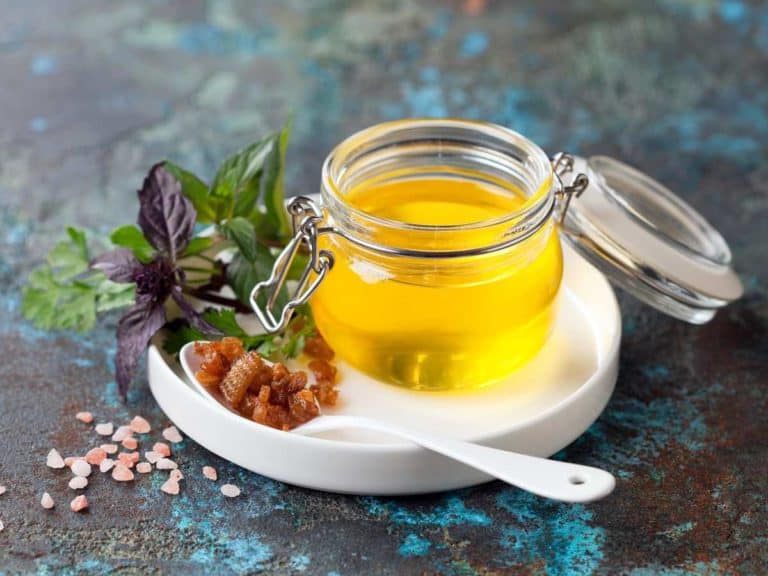
![Stove Temperatures [Low Heat, Medium, High, etc]](https://foodwine.com/wp-content/uploads/stove-temperature-420628237-768x576.jpg)
